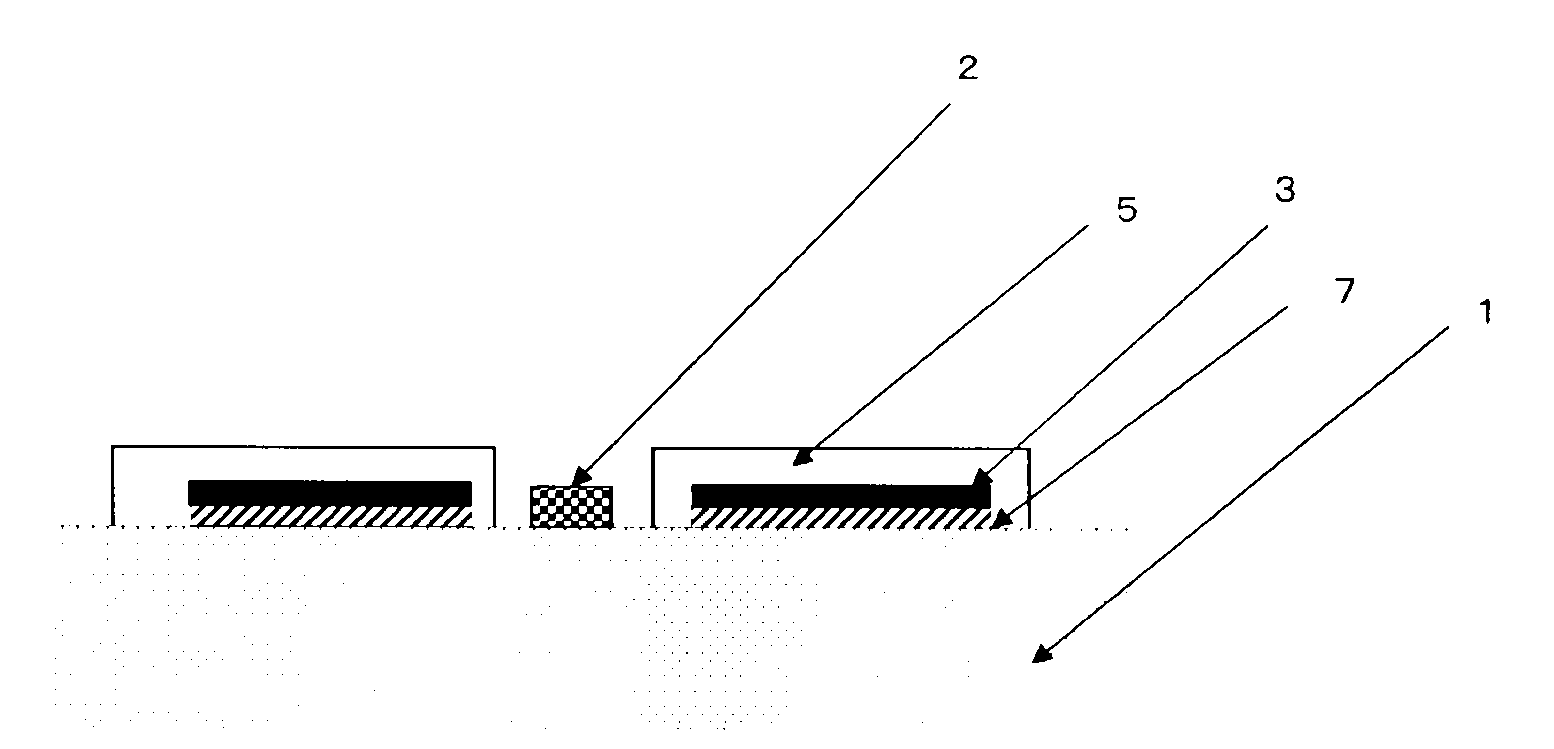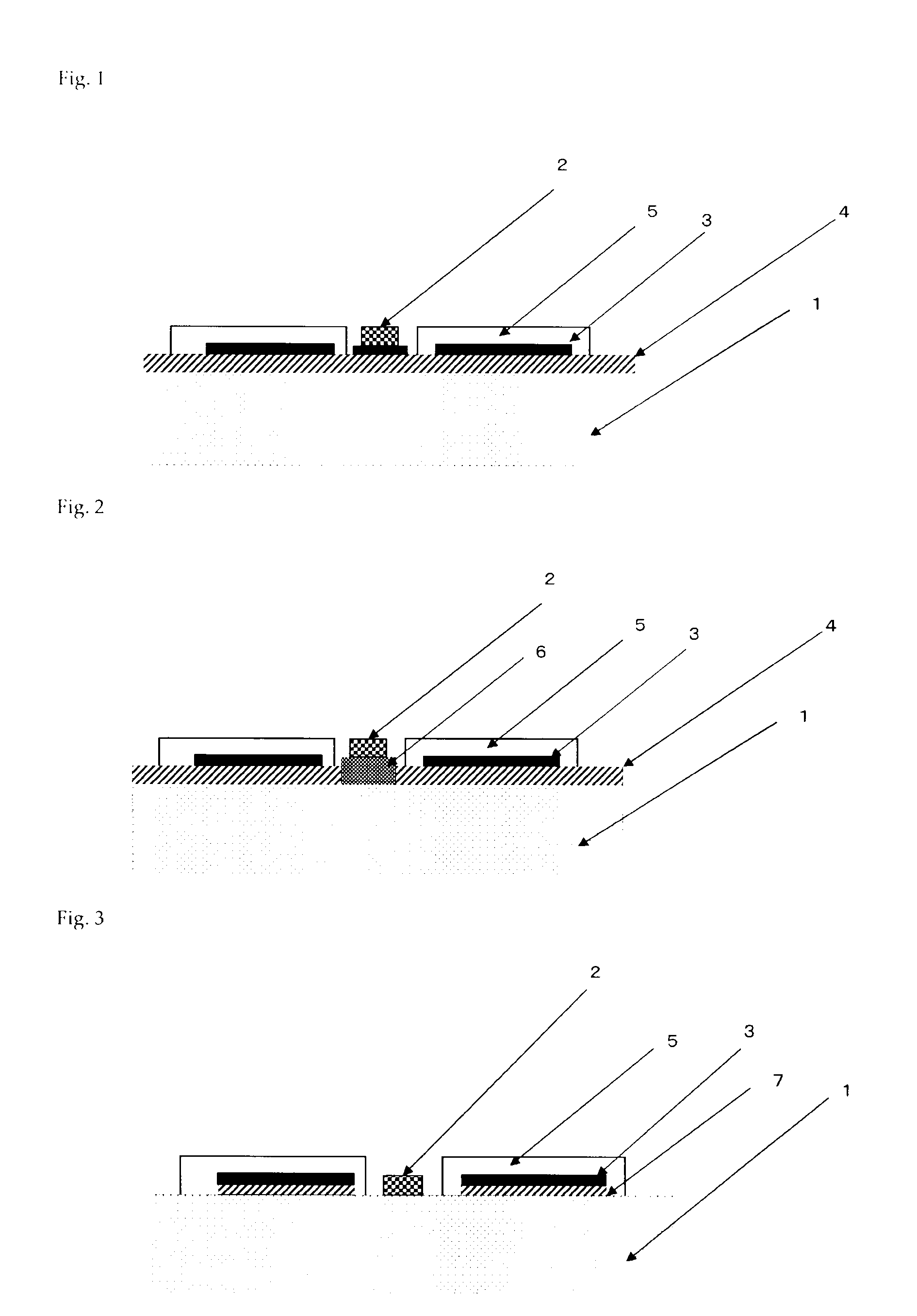Substrate comprising aluminum/graphite composite, heat dissipation part comprising same, and LED luminescent member
a technology of led luminescent member and heat dissipation part, which is applied in the direction of solid-state devices, metal-working apparatuses, synthetic resin layered products, etc., can solve the problems of led devices being destroyed, material cost, and warping, so as to reduce material loss, heat dissipation properties and reliability, and efficient production
- Summary
- Abstract
- Description
- Claims
- Application Information
AI Technical Summary
Benefits of technology
Problems solved by technology
Method used
Image
Examples
examples 1 and 2
[0077]As Example 1, an isotropic graphite material (Tokai Carbon 6347) of bulk density 1.83 g / cm3, and as Example 2, an isotropic graphite material (Tokai Carbon G458) of bulk density 1.89 g / cm3, were worked to the shape of a rectangular parallelepiped of dimensions 200 mm×200 mm×250 mm, then sandwiched between iron plates of thickness 12 mm coated with a graphite mold release agent, and coupled with M10 nuts and bolts to form a stack. The resulting stack was preheated for 1 hour in an electric furnace with a nitrogen atmosphere at a temperature of 650° C., then placed in a preheated press mold of inner diameter 400 mm×height 300 mm, an aluminum alloy melt containing 12 mass % of silicon was poured in, and a pressure of 100 MPa was applied for 20 minutes to infiltrate the isotropic graphite material with the aluminum alloy. Next, after cooling to room temperature, the aluminum alloy and iron plate portions were cut with a wet band-type saw, resulting in a 200 mm×200 mm×250 mm alumin...
example 3
Led Light Emitting Element Production Example
[0082](1) The plate-shaped aluminum-graphite composite of Example 1 was electroplated to form a copper layer 35 μm thick on one entire surface of the composite, then the copper layer other than at the desired portions was removed by etching to form an aluminum-graphite composite having copper bumps. On the other hand, 100 parts by mass of bisphenol F-type epoxy resin (Epicoat 807, epoxy equivalent=173, Yuka Shell Epoxy) as an epoxy resin, 5 parts by mass of the silane coupler γ-glycidoxypropylmethyl diethoxysilane (AZ-6165, Nippon Unicar) and 500 parts by mass of alumina of average grain size 5 μm (AS-50, Showa Denko) as an inorganic filler were mixed together in a general-purpose mixer / stirrer, and as a curing agent, 45 parts by mass of polyoxypropylene amine (Jeffamine D-400, Texaco Chemicals) was added and mixed. This as applied to the 35 μm-thick copper foil to a thickness of 100 μm and put into the B-stage state to prepare a copper f...
example 4
Led Light Emitting Element Production Example
[0083]The plate-shaped aluminum-graphite composite obtained in Example 1, a bonding material consisting of an alloy composed of 95% Al-4% Cu-1% Mg and having a thickness of 0.3 mm, and a 0.4 mm thick Al circuit were stacked in that order to form a single set, and ten sets were stacked with spacers placed in between. These were heated for ten minutes at 610° C. in a vacuum (batch furnace) of 4×10−3 Pa while applying pressure at 500 MPa in the direction perpendicular to the substrate surface consisting of an aluminum-graphite composite from outside the furnace using a hydraulic uniaxial press device via a carbon push rod, thereby bonding them together, to form an aluminum-graphite composite circuit board. Next, a white solder resist (PSR4000-LEW1, Taiyo Ink) was applied via a screen onto a specific circuit, then UV-cured. Furthermore, an insulated LED chip (1 mm2) was adhered over the electrolytic copper foil exposed portion by an Ag paste,...
PUM
| Property | Measurement | Unit |
|---|---|---|
| thickness | aaaaa | aaaaa |
| temperature | aaaaa | aaaaa |
| temperature | aaaaa | aaaaa |
Abstract
Description
Claims
Application Information
 Login to View More
Login to View More - R&D
- Intellectual Property
- Life Sciences
- Materials
- Tech Scout
- Unparalleled Data Quality
- Higher Quality Content
- 60% Fewer Hallucinations
Browse by: Latest US Patents, China's latest patents, Technical Efficacy Thesaurus, Application Domain, Technology Topic, Popular Technical Reports.
© 2025 PatSnap. All rights reserved.Legal|Privacy policy|Modern Slavery Act Transparency Statement|Sitemap|About US| Contact US: help@patsnap.com


